The Long, Sweet Love Affair Between Cops and Doughnuts
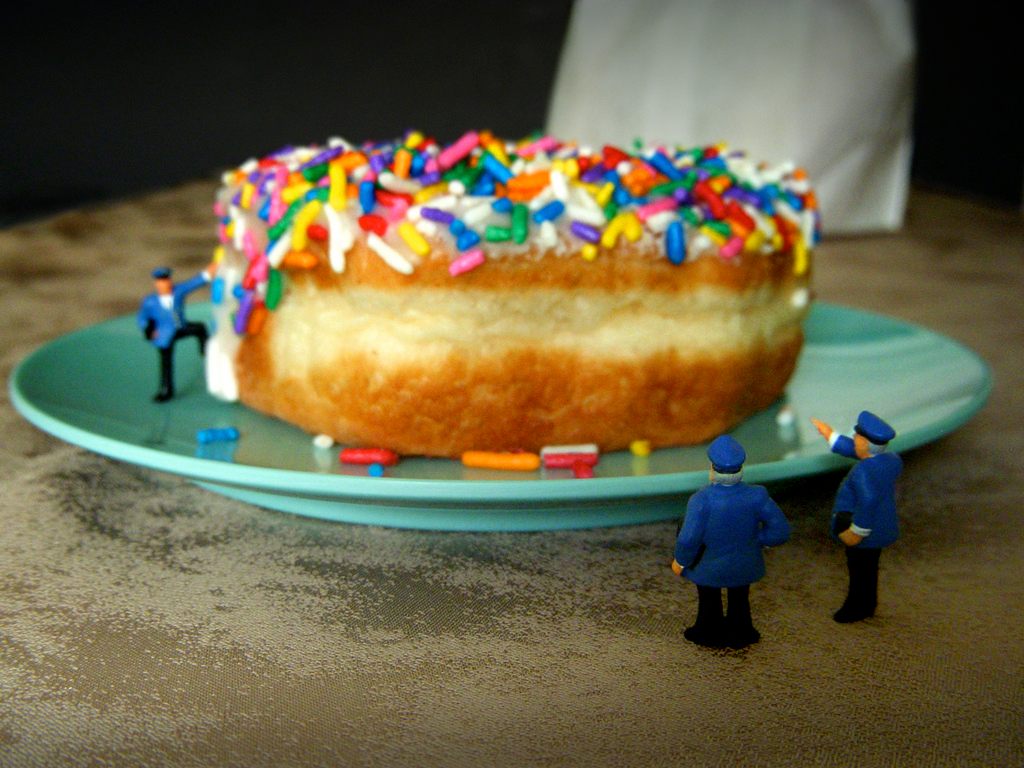
We’ve got a situation. (Photo: JD Hancock/Flickr)
It’s a scene procedural writers probably see in their sleep—a burglar (or bank robber, or other ne’er-do-well) slides open a window, grabs the jewels, and high-tails it, leaving screaming alarm sirens in his wake. The dispatcher gets the call and picks up the radio. Who will stop this menace? Cut to: an officer of the law or two, hanging out in the cruiser or posted up on a corner—and munching on doughnuts.
As the New York Times put it in 1996, “no profession is as closely identified with food as police work is with doughnuts.” Amid interviews with real officers, the article cites a Letterman sketch, The Simpsons, and an Ice Cube song as proof. These days, this trope is so stale you’re more likely to see scenes making fun of it—the Law & Order episode in which terrorists leave explosives in a doughnut box, or Wreck-it Ralph’s pastry police officers, Wynchel and Duncan. Even Special Agent Cooper’s glazed-eyed reverence for the treat plays, like everything else in Twin Peaks, a little camp.
But every cliché was born (or fried) for a reason. A cowboy needs a horse, a fireman needs a dalmatian, and a doctor needs a stethoscope. But why does a cop need a doughnut?
The common-sense response traces this tradition to the middle of the 20th century, when police departments started switching from foot-based beats to driving ones. Officers working a graveyard shift needed someplace to park the cruiser, fuel up on caffeine and sugar, and maybe fill out some paperwork or make an emergency call. Because doughnut shops had to stay open late to prepare for the morning rush, they fit the bill nicely, explains Michael Krondl in his book The Donut. (As fate would have it, around this same time, two pipin’ fresh chains started sugaring up the night—though they had each started a decade or so earlier, by the late 1950s Krispy Kreme and Dunkin’ Donuts had each sprinkled their half of the country with cop-friendly franchises).
Meanwhile, having officers around made the shop workers feel safe—as early as 1950, one small-time inn owner threatened a larger, litigious hotel chain by boasting, “our High Sheriff and our local troop of state police… help themselves to coffee and doughnuts in my kitchen when the spirit so moves them, which seems about every day.” This foreshadowed a rash of law-enforcement “specials”—enough that a 1964 issue of Police warned its readers, “Do not accept gifts—donuts and coffee. This gives the impression of partiality.” In some small towns, doughnut shops even have desks set aside for policemen who need to work through their breaks. “This symbiotic relationship gave rise to the popular conception of cops being addicted to doughnuts,” writes Zach W. Brown in American Profile.
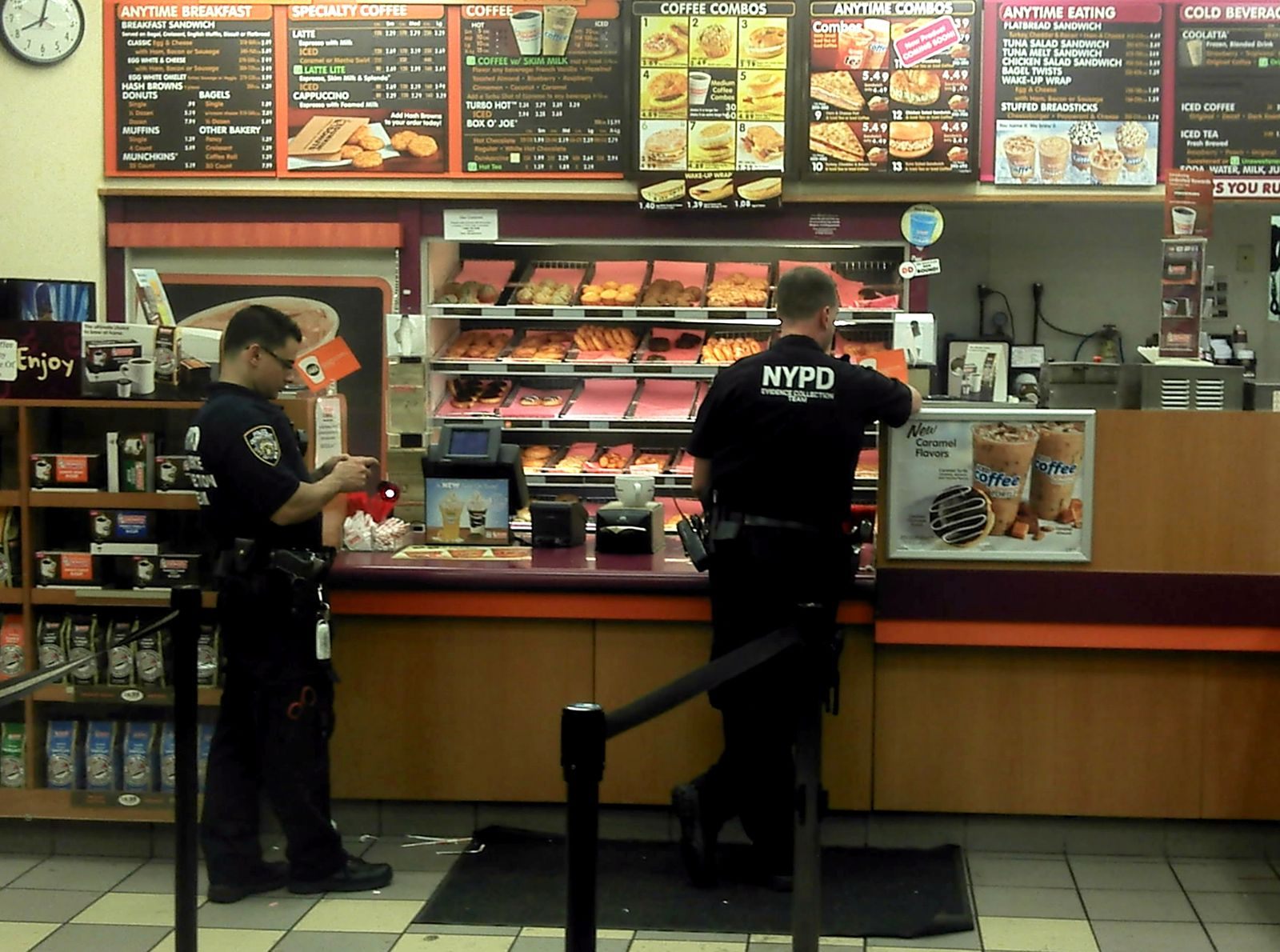
NYPD officers case an East Village Dunkin’ Donuts. (Photo: David Shankbone/WikiCommons CC BY 3.0)
Many officers have their own personal spin on this tale. There’s the Reno-based patrolman who caffeinated at a casino until the local doughnut shop owner intervened, and the female captain who needed someplace to use the restroom because she couldn’t just unzip and let rip like her colleagues. Beyond the convenient infrastructure, there is the food itself: the sugar, carbohydrates, and fat provide a triple-shot of energy that’s welcome halfway through a long night of patrolling. As former Philadelphia police chief Frank Rizzo recalls, “You got out there, walked around, rolled in the streets with criminals, and burned the calories off.” Doughnuts are ready right away, unlike even 24-hour diner food, and they come in a bunch of varieties (Lou Clark of the Oakland Police Department told Krondl that in the early ‘60s, superiors would play “guess-the-flavor” if cops returned to the station with stains on their shirts). Plus, they’re cheap, “so they can be discarded with little guilt in case of a hot call in the middle of a snack break,” one policeman points out. Add all this up and the appeal is obvious. Some departments even call them “power rings.”
Stare harder into the hole, though, and the cop-doughnut relationship isn’t just a marriage of convenience—it’s deeper than that. In fact, we’ve officially stuffed the protecting-and-serving citizens of our country with sugary pastries since at least World War I, when the Salvation Army sent female volunteers to France to cook doughnuts and bring them to the front. The originator of this tradition, a young ensign named Helen Purviance, knelt before a potbelly stove to make the first batch in a frying pan. “There was also a prayer in my heart that somehow this home touch would do more for those who ate the doughnuts than satisfy a physical hunger,” she said later. For a while, U.S. soldiers were actually called “doughboys,” and though they may have originally gotten this nickname some other way, the millions of doughnuts certainly didn’t hurt.
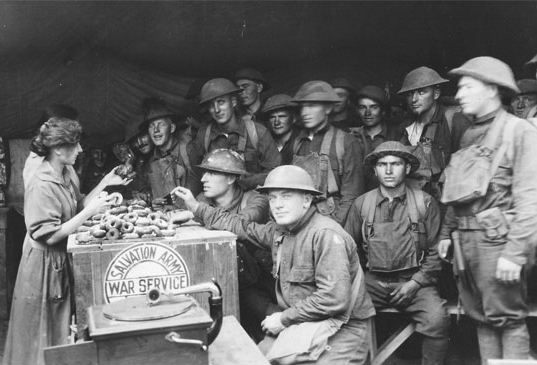
Salvation Army “doughnut girls,” frying up treats for the troops in 1920. (Photo: The Salvation Army Chattanooga/Public Domain)
By 1927, American veterans back in France for the American Legion National Convention were demanding enough breakfast doughnuts that the French had to send for bigger frying kettles. When the Red Cross jumped on the bandwagon during World War II, they churned out so many they started charging for them, a (quickly overturned) decision that has earned them decades of enmity from the armed forces. Though it was solidified in the war, this tradition of doughnuts-as-thanks goes back even further—in a November 1898 New York Times article about a Thanksgiving party for an NYC regiment, a volunteer cook describes serving “home-made doughnuts” to the hungry soldiers. “No store doughnuts for our troops,” she says.
After the wars ended, the returning soldiers took their taste for doughnuts back with them—and the relief organizations did the same with their taste for giving them away, quickly making them a staple of various disaster-relief efforts, where they filled the stomachs of victims and rescuers alike, including policemen. Somewhere in the modern cop-doughnut partnership, there’s a crumb of this original gesture of care.
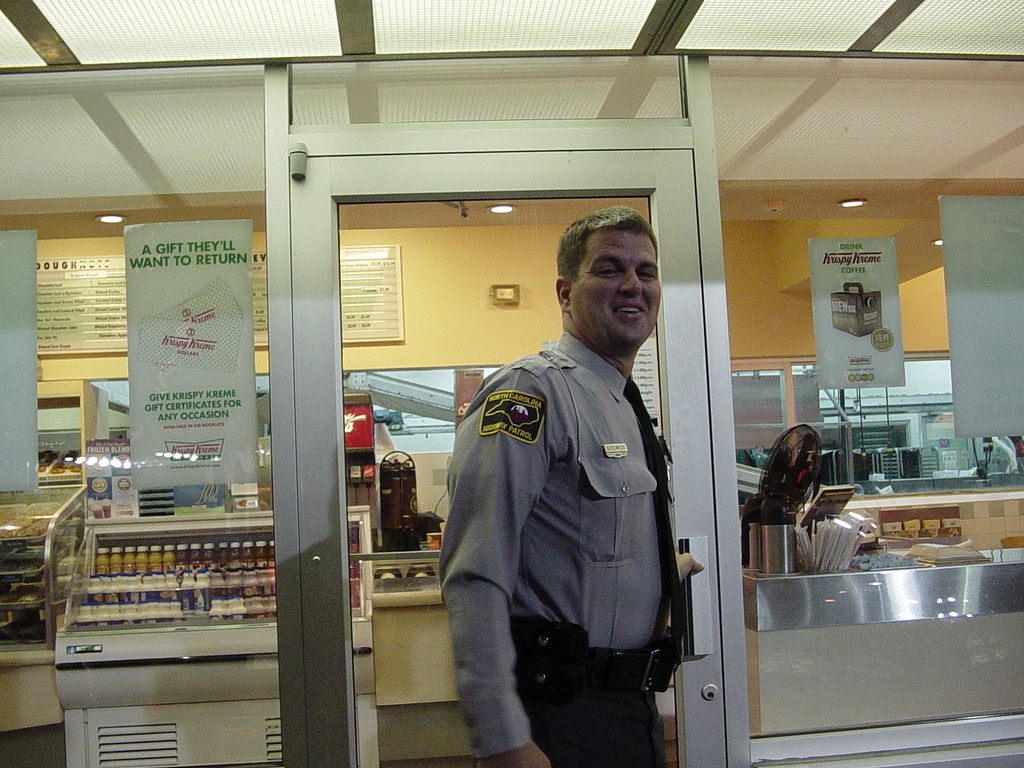
A North Carolina police officer visits a Krispy Kreme during his first day on the job. (Photo: Mark Doliner/Flickr)
In a 2012 interview, theorist Lauren Berlant spoke of how contemporary working life “puts pressure on… small pleasures to sustain our survival.” A doughnut is among the smallest of pleasures, but the sustenance it provides to a working police officer is literal, social and emotional. Unlike their wartime counterparts, police officers don’t have strict front lines—they go where the conflict is—but doughnut shops, identical and always open, provide areas of reliable respite. (When zones do grow more defined, so does this parallel; the center of Boston locked down after the 2013 Boston Marathon Bombings, but a few local Dunks stayed open, at police officers’ requests.)
“When we’re in a stakeout with another unit, we bring a dozen doughnuts just to break the ice,” New York City Detective Tom F. Weiner Jr. told the Times. One group of Michigan officers, blue at the prospect of their local bakery closing, pooled their money and bought it. It’s now a 24-hour community hotspot called—what else—Cops & Doughnuts. There you can get cinnamon-twist “Night Shifts” and lemon-filled “Tasers.” In early September, a customer at San Francisco’s Happy Donuts caught two officers sitting at a table and joking about police shootings—proof that the sense of camaraderie in a doughnut shop can glaze over common sense.
Even police who eschew doughnuts talk about the choice in terms of their responsibilities, both to themselves and others. Doughnuts are a headline-punchline in ubiquitous articles about police fitness, often atop stories like this one, in which officers talk to each other about how they overeat when agitated by their jobs. If you can’t bring the box of doughnuts, stories about how you wanted to eat the whole thing will suffice.
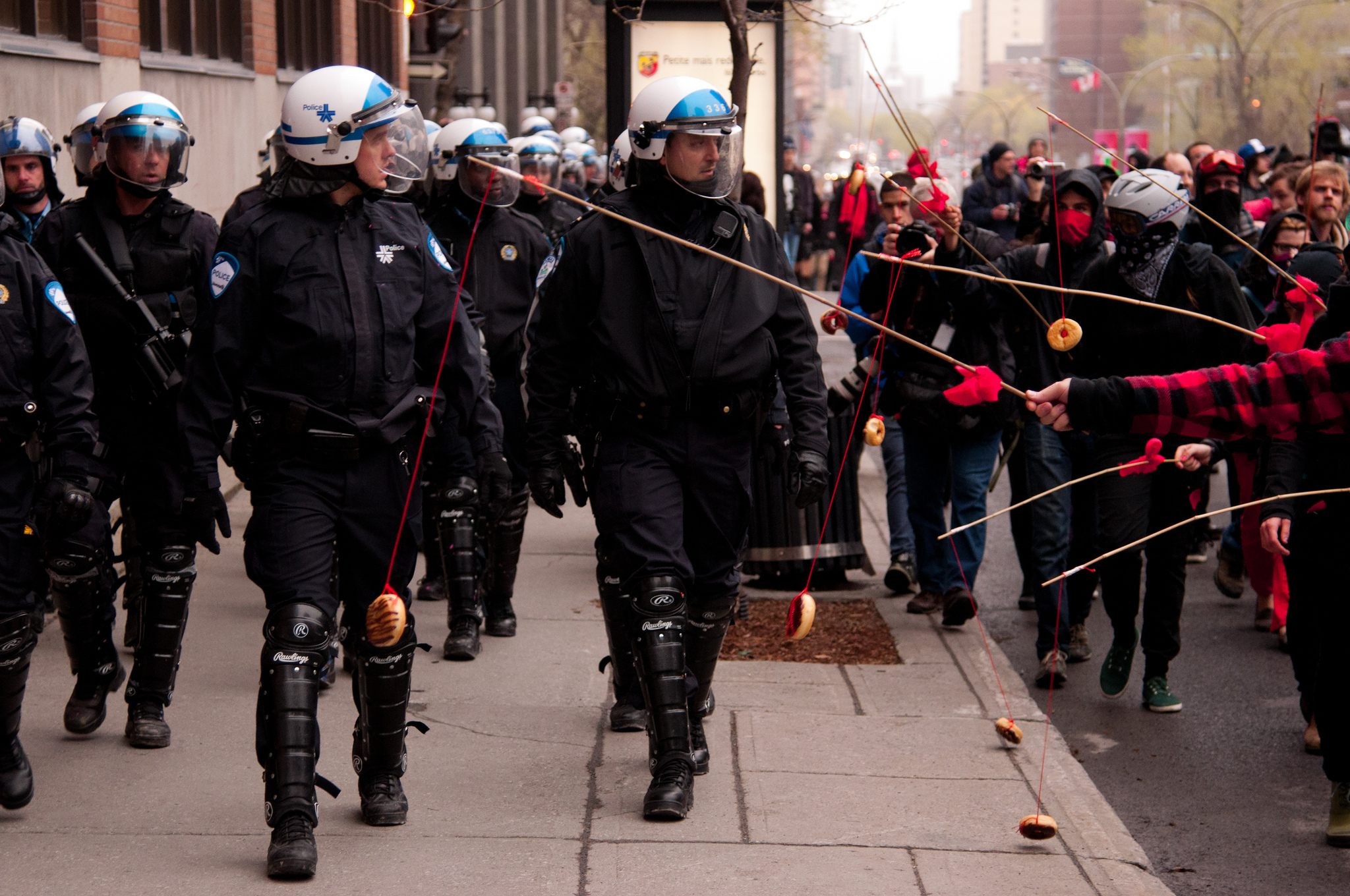
Protesters dangling doughnuts in front of riot cops in Montreal. (Photo: Alexis Gravel/Flickr)
To those who already distrust law enforcement, pointing out the doughnut connection is a way to smear frosting on the face of the powerful. Protesters have been known to dangle doughnuts on fishing rods in front of riot police, and there’s a Reddit group dedicated to “law enforcement abuse stories” called “Bad Cop No Donut.”
The doughnut may be a one-sided shape, but it’s a many-sided rhetorical weapon. No longer content to merely get their just desserts, police are using doughnuts to give back, too—to show that they understand that in the contemporary world, the protectors sometimes need to prove themselves. These days, cops brandish doughnuts to poke holes in their own mythos and bond with their communities, often simultaneously. They climb pink Dunkin’ Donuts roofs for charity, send patrol horses through the drive-thru, or make sure they’re the first people at the debut of a new shop. Sometimes, the jokes have local flavor—after Oregon legalized marijuana, the Portland Police released a chart comparing different weed amounts to the size of a popular regional doughnut. (If you’re carrying more than one doughnut’s worth, you’re over the limit). The website Police Daily collects photos of cops chowing down, often with big, self-aware smiles.
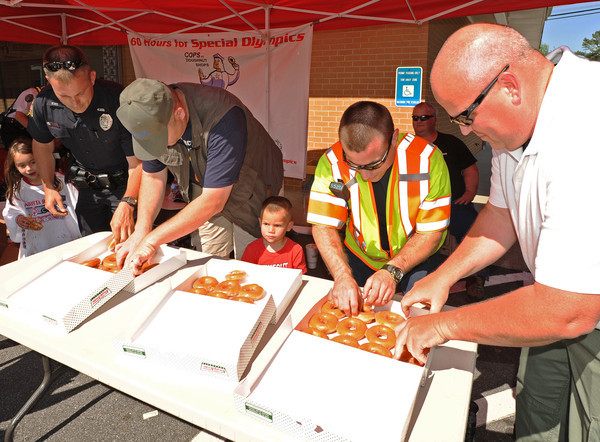
Members of Georgia’s Marietta Police Department give out doughnuts at an annual fundraiser. (Photo: Marietta Public Information Office/Flickr)
“One thinks of policing as a sort of disciplinary, paternal, stern and potentially violent occupation, and doughnuts are fluffy [and] sweet” wrote historian Jim Paradis in an email. “The contrast… makes some effort to humanize the cops, who greatly need humanizing.” The cops are aware of this: Corporal Mark Ivey, who starred in a Wilmington, Pennsylvania Police Department video called “Cops & Donuts: An Explainer,” defended the decision by calling it “a creative way to strengthen the department’s relationship with the community.” “By showing that you can poke fun at yourself, that you can laugh at yourself and that you are just an everyday citizen going out there and doing a difficult job and that you need their help, that’s how you can solve this problem,” of strained relationships, Ivey said.
That’s a lot of weight for a squishy pastry—even one with the strength of history—but anecdotal evidence reveals cops are upping their dosage. When asked whether police ever visit the store, an employee of Union Square Donuts in Somerville, Massachusetts affirmed. “One came in this morning,” she said. “He got a whole box.”
Update, 10/21: A photo caption in this post originally misspelled the town name Marietta. The article has also been updated to clarify that American veterans in France in 1927 were attending the American Legion National Convention. We regret the errors.
Gastro Obscura covers the world’s most wondrous food and drink.
Sign up for our email, delivered twice a week.







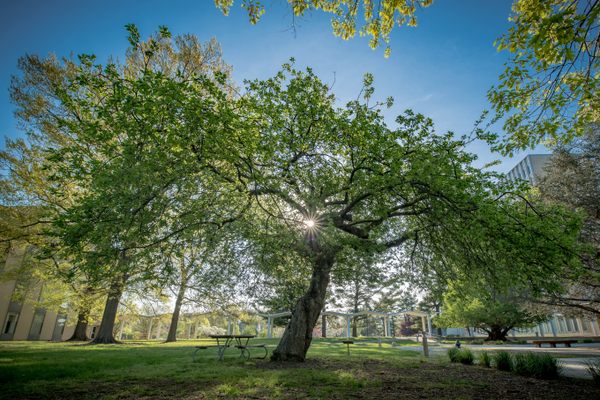















Follow us on Twitter to get the latest on the world's hidden wonders.
Like us on Facebook to get the latest on the world's hidden wonders.
Follow us on Twitter Like us on Facebook